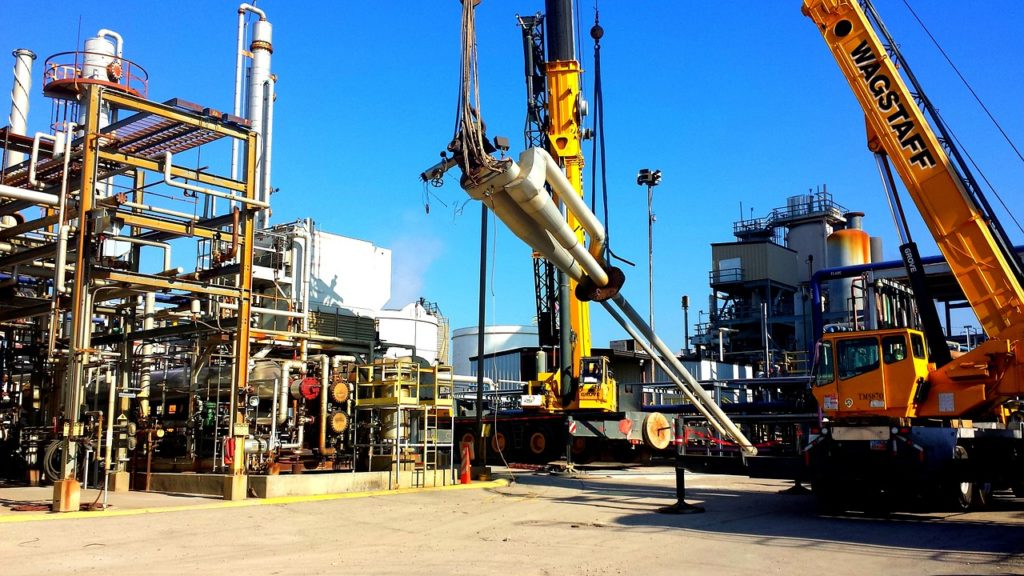If money were no object, what tools or skills would you acquire to grow your business?
In many ways, that’s a silly question to ask, because money is always going to be a primary concern. It’s certainly a top priority for operators and organizations looking to adopt drone technology, where the benefits associated with making a given task is cheaper, faster or safer have been detailed in a variety of industries. Being able to quantify what all of that means in terms of an ROI is often a prerequisite of adoption, but that can be a difficult proposition if the value of a drone needs to be demonstrated before moving forward with an investment.As a means to move forward without a significant direct investment, we’ve discussed why it can make sense to finance your investment in drone technology, and have also explored what kind of financing options exist for professionals who want to utilize drones to augment their services or process. Financing a drone investment isn’t always about demonstrating the value of what adoption can mean today though. Doing so can represent a value proposition that opens up critical opportunities in the present and future, all of which reframes the question of where your business can go by getting the right equipment in your team’s hands. What’s Your Tipping Point?Professionals in industries that range from construction to agriculture to infrastructure inspection have recognized what it can mean for them to utilize drone technology, but the approach around doing so varies a great deal. Regardless of the application, many have questions about whether or not drone technology can allow these professionals to expand their offerings in a meaningful way, and what the costs associated with doing so might be.“People's initial buying behavior is focused on what someone needs, and what's the minimum they have to spend to fulfill that need,” said Nick Gibbens, Sr. Vice-President of Vendor Finance at AP Equipment Financing. “But if money wasn't an issue, how would they approach fulfilling that need? Would they add x, y, and z? Or just x and y? As a result, does that broaden your potential in the new market you are developing to include companies that otherwise wouldn't select you? It’s an important thing to consider, because you can reach a tipping point in terms of how much value you’re able to provide based on the tools you have available.”Figuring out whether or not you’ve reach your tipping point often means asking some tough questions, such as:
What’s Your Tipping Point?Professionals in industries that range from construction to agriculture to infrastructure inspection have recognized what it can mean for them to utilize drone technology, but the approach around doing so varies a great deal. Regardless of the application, many have questions about whether or not drone technology can allow these professionals to expand their offerings in a meaningful way, and what the costs associated with doing so might be.“People's initial buying behavior is focused on what someone needs, and what's the minimum they have to spend to fulfill that need,” said Nick Gibbens, Sr. Vice-President of Vendor Finance at AP Equipment Financing. “But if money wasn't an issue, how would they approach fulfilling that need? Would they add x, y, and z? Or just x and y? As a result, does that broaden your potential in the new market you are developing to include companies that otherwise wouldn't select you? It’s an important thing to consider, because you can reach a tipping point in terms of how much value you’re able to provide based on the tools you have available.”Figuring out whether or not you’ve reach your tipping point often means asking some tough questions, such as:- What does it take to be fully employable or to provide all the services that your organization needs?
- Are you missing out on a job because you didn't have that capability that a competitor does?
- Are you not able to fully deliver on a project because the tools you’re using are too limited?
- Have you been forced to contract out part of a project due to a lack of capabilities or expertise?
 Revenue in the Present, Opportunities in the FutureThe concept of being able to do more with less is a luxury that is quickly turning into a necessity for professionals in a variety of fields. Shrinking budgets and condensed timelines mean that clients and stakeholders want and need more from the people who are doing everything from measuring stockpiles to assessing inventory. As fun as it is to talk about how drones might be able to transform workflows and even entire industries, what matters is how the technology is being used today.What makes sense right now is the way in which small and large construction firms are able to leverage this technology. What makes sense right now is the difference drones can make when it comes to reducing the costs of inspections that need to be performed all across the country. The technology certainly can open up opportunities in the future, but it’s also making a difference in today’s workflows, which underscores the importance of not letting anything stand in the way of quick adoption.“Letting the cost of an investment get in the way of adoption is about more than finances, and goes back to the concept of what happens if you’ve reached your tipping point,” Gibbens said. “It’s not just about your tipping point though. What’s the figurative cost of not making an investment if your competition is willing to make it? That choice means something today when you might be using a single drone, and it has a direct impact on what it’s going to mean in a few years when operators and organizations expect the benefits that come with accuracy and automated capabilities of drone technology.”There’s a literal expense associated with adopting technology like drones, and options like financing can ease those costs, but the figurative cost of not adopting can be even more severe. Not making an effort to understand how these tools are changing workflows and expectations represents an even greater cost.
Revenue in the Present, Opportunities in the FutureThe concept of being able to do more with less is a luxury that is quickly turning into a necessity for professionals in a variety of fields. Shrinking budgets and condensed timelines mean that clients and stakeholders want and need more from the people who are doing everything from measuring stockpiles to assessing inventory. As fun as it is to talk about how drones might be able to transform workflows and even entire industries, what matters is how the technology is being used today.What makes sense right now is the way in which small and large construction firms are able to leverage this technology. What makes sense right now is the difference drones can make when it comes to reducing the costs of inspections that need to be performed all across the country. The technology certainly can open up opportunities in the future, but it’s also making a difference in today’s workflows, which underscores the importance of not letting anything stand in the way of quick adoption.“Letting the cost of an investment get in the way of adoption is about more than finances, and goes back to the concept of what happens if you’ve reached your tipping point,” Gibbens said. “It’s not just about your tipping point though. What’s the figurative cost of not making an investment if your competition is willing to make it? That choice means something today when you might be using a single drone, and it has a direct impact on what it’s going to mean in a few years when operators and organizations expect the benefits that come with accuracy and automated capabilities of drone technology.”There’s a literal expense associated with adopting technology like drones, and options like financing can ease those costs, but the figurative cost of not adopting can be even more severe. Not making an effort to understand how these tools are changing workflows and expectations represents an even greater cost. 















Comments